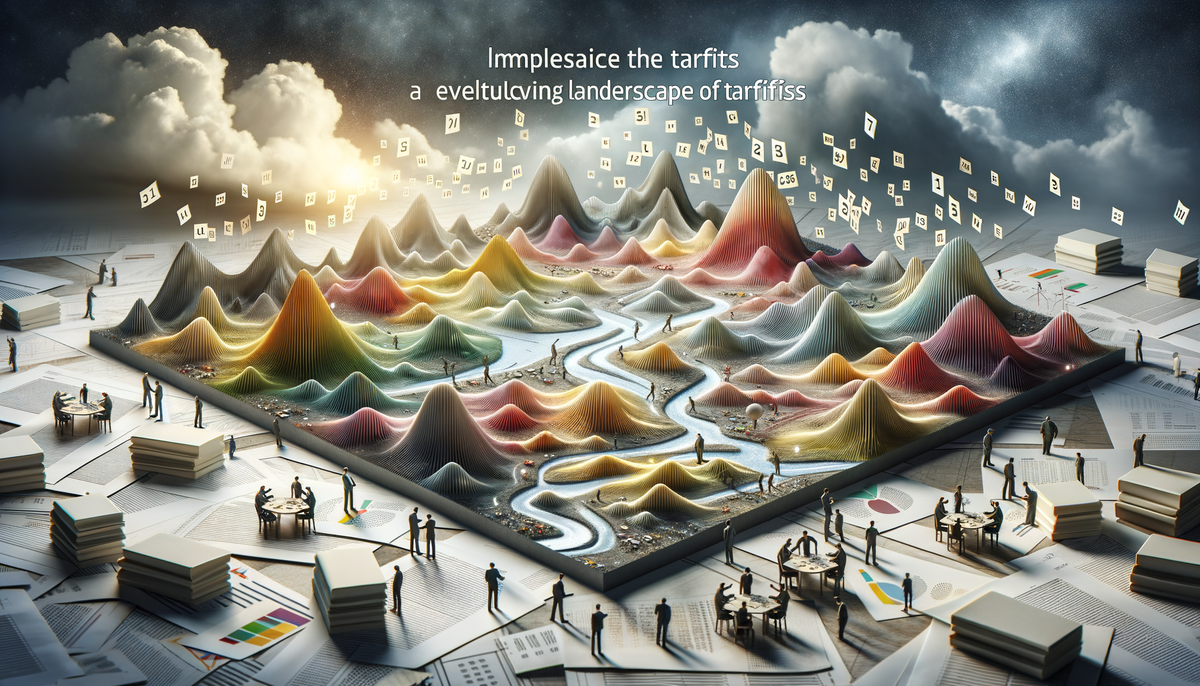Understanding Tariffs: Definition, Types, and Impact
Explore the evolving landscape of tariffs, their implications, and strategic insights with our comprehensive analysis.

Understanding Tariffs: Definition, Types, and Impact
A tariff is a tax imposed by one country on goods and services imported from another country. These taxes serve multiple purposes: to influence trading partners, raise government revenue, or protect domestic industries from foreign competition. [source]
Types of Tariffs
There are two main types of tariffs:
- Specific tariffs: Fixed fees based on the type of item, such as a $500 tariff on an imported car.
- Ad-valorem tariffs: Taxes based on a percentage of the item's value, such as a 5% tax on an import's value.
Additionally, tariffs can be categorized by their primary function:
- Protective tariffs: Designed to increase the price of imported goods relative to domestic goods, encouraging consumers to buy from local producers who are "protected" from foreign competition.
- Revenue tariffs: Primarily implemented to generate money for the government.
How Tariffs Work
Tariffs function as trade barriers that effectively increase the price of goods and services purchased from another country, making them less attractive to domestic consumers. When a tariff is imposed, the exporting country is affected because consumers in the importing country might avoid their products due to higher prices. If consumers still choose the imported product despite the tariff, they pay a higher price, essentially bearing the cost of the tax. The tariff raises prices, reduces available quantities, and creates market inefficiencies. [source]
Tariffs in the United States
The United States has a long history with tariffs, dating back to the early days of the nation. The Constitution grants Congress the power "to regulate commerce with foreign nations," which it used for over a century to impose tariffs. One notorious example was the 1930 Smoot-Hawley Tariff Act, which raised nearly 900 separate tariffs and is believed by many economists to have worsened the Great Depression. Over the past 90 years, Congress has gradually delegated more trade authority to the executive branch. Several key pieces of legislation shaped U.S. tariff policy, including the Reciprocal Trade Agreements Act of 1934, the Trade Expansion Act of 1962, and the Trade Act of 1974. These laws enable the president to raise tariffs if foreign countries engage in unfair trading practices, imported goods threaten critical domestic industries and harm national security, or domestic industries are "seriously injured" by import competition. Interestingly, the U.S. Constitution (Article I, Section 9) explicitly forbids export tariffs. [source]
Historical Context
Tariffs have experienced fluctuations in popularity throughout U.S. history. They were first implemented shortly after the Constitution's ratification to help fund the federal government. They gradually fell out of favor but resurged between World Wars I and II. After fading again, tariffs have recently re-emerged as a policy tool, sparking debate about their effectiveness. Tariffs continue to be a complex and often contentious aspect of international trade policy, with ongoing debates about whether they represent good or bad economic policy.
Practical Takeaways for Tariff Professionals
For tariff professionals and business leaders, understanding the dynamic landscape of tariffs is crucial. Engage in continuous learning about current tariffs and trade policies to position your organization effectively in international markets. Align your strategy with regulatory changes to mitigate risks associated with tariffs. Consider engaging in policy advocacy to influence future tariff legislation favorable to your interests.
Aligning with Consulting Expertise
At Newsomix.com, we bring expert insights into the intricacies of tariff regulations and their implications on global trade. Our team provides strategic consultancy to help businesses navigate the challenges posed by tariffs, ensuring compliance and optimization of supply chains.
Call to Action
Explore further insights and strategic solutions in the ever-evolving world of tariffs with our expert guidance. Visit Newsomix.com for more in-depth articles and consultancy services that empower your business to thrive amidst tariff transformations.




